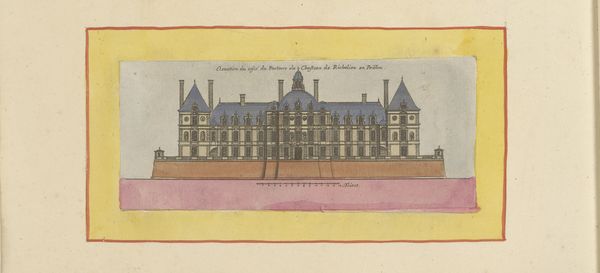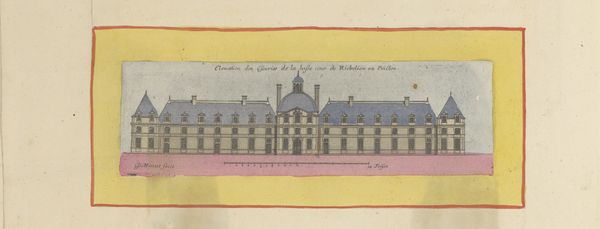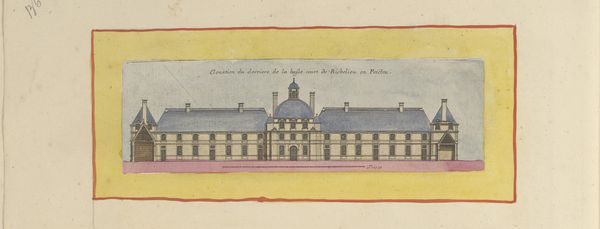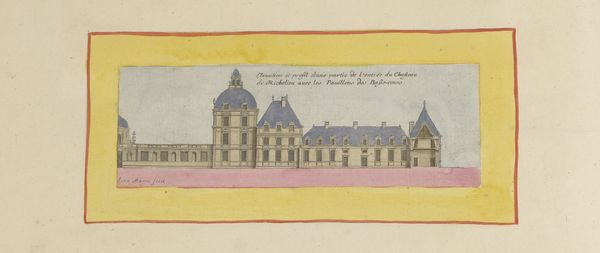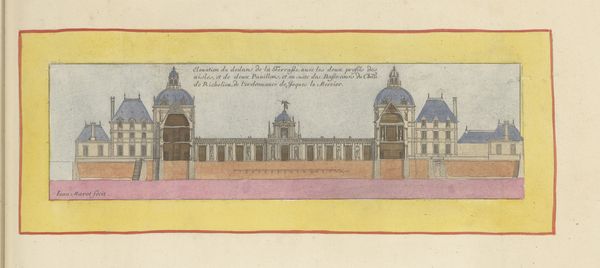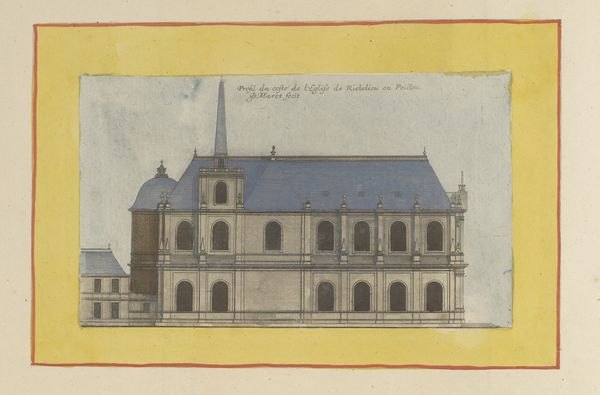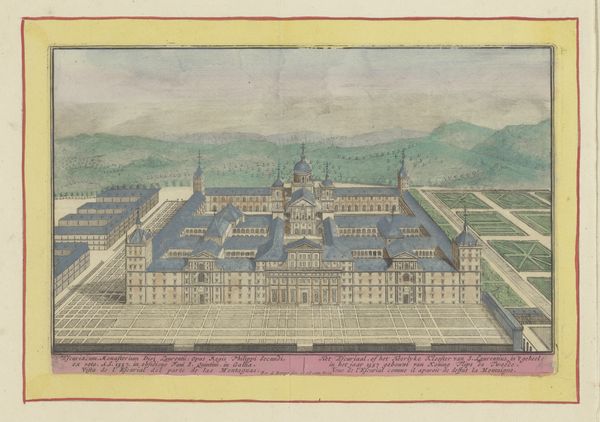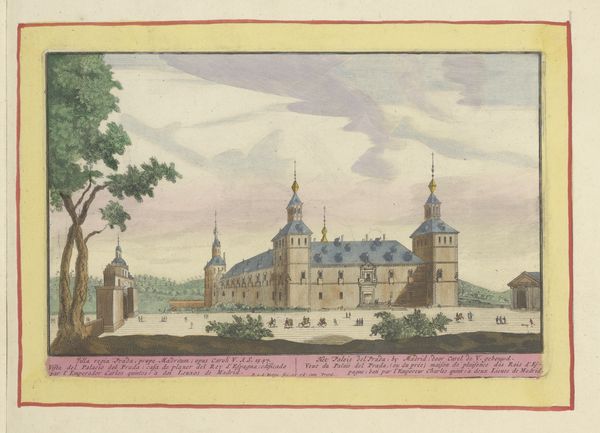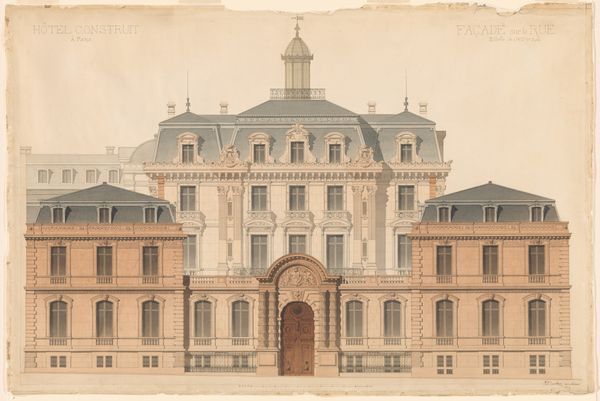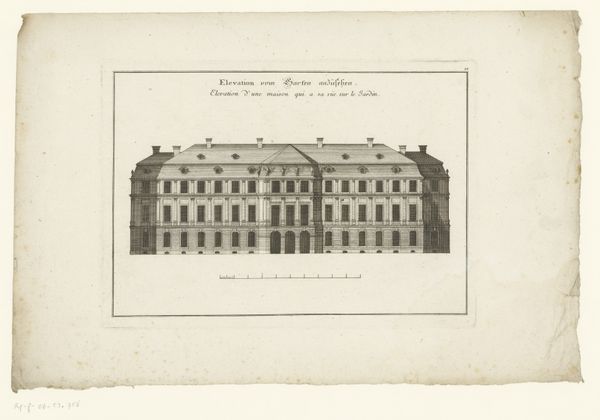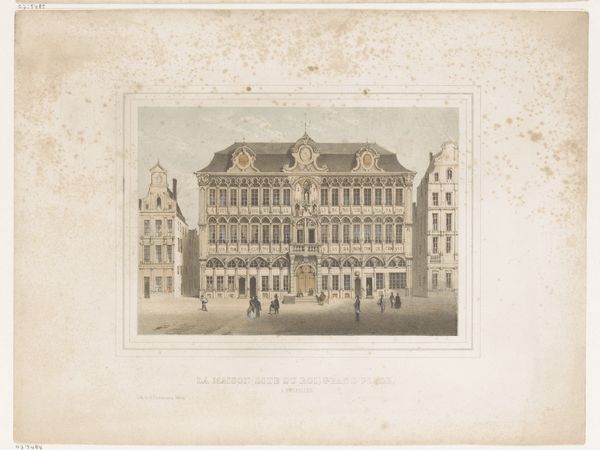
Gezicht op de gevel van het kasteel van Richelieu met doorsnede van het trappenhuis 1629 - 1679
0:00
0:00
drawing, coloured-pencil, architecture
#
drawing
#
coloured-pencil
#
baroque
#
landscape
#
coloured pencil
#
architecture
Dimensions: height 78 mm, width 189 mm, height 532 mm, width 320 mm
Copyright: Rijks Museum: Open Domain
Editor: Here we have Jean Marot’s “View of the facade of the Richelieu castle with a cross-section of the staircase,” made sometime between 1629 and 1679, using drawing and colored pencil. It gives off a stately and measured feel… What cultural symbols are evoked in this drawing for you? Curator: This architectural rendering whispers of power, control, and the grand ambitions of the Baroque era. Consider the symbolism inherent in a structure like a castle, not merely as a residence but as a deliberate statement of authority. Even though the image itself is rather simple, it communicates a complex historical moment of political and cultural memory. Editor: Could you say more about how the castle broadcasts authority? Curator: Certainly. Think about the precision of the drawing, how it conveys meticulous planning. The cross-section revealing the staircase suggests not just aesthetic refinement, but controlled access and hierarchical space. How does this internal order relate, in your view, to the projected power of the facade itself? Editor: It’s like the architecture becomes a visual metaphor for structured governance… everything is carefully organized from the inside out, so what's projected seems even more potent. I guess that relates to ritual and theater of state, yes? Curator: Precisely! This image becomes a potent reminder of how architecture can embody and communicate cultural values. It makes one think about legacy, memory, and how the past continues to shape the present. What have you learned? Editor: It’s interesting how one single drawing can carry the weight of so much symbolic and political significance! It really emphasizes how artistic expression mirrors—and molds—cultural identity. Thanks for this insight!
Comments
No comments
Be the first to comment and join the conversation on the ultimate creative platform.
